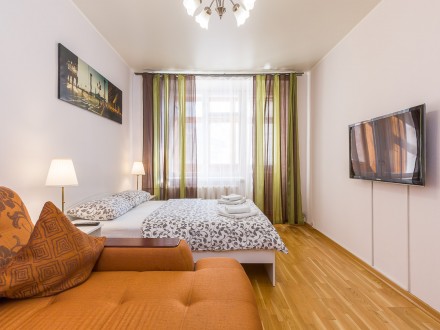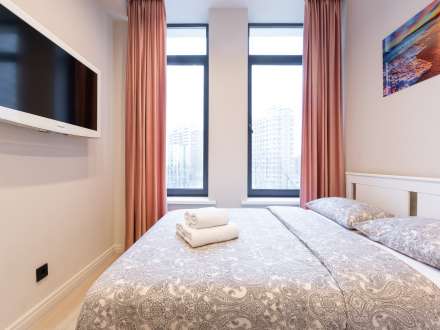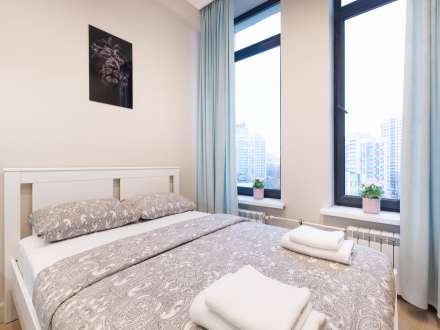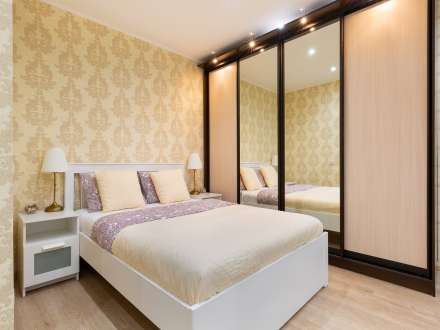the Moscow Kremlin
What is the Moscow Kremlin
The designated architectural value is not only a magnificent monument, but is considered a sacred symbol of Russian statehood. The Moscow Kremlin, which is surrounded by red-brick walls located on 27.5 hectares includes:
- huge museum complex;
- several cathedrals;
- beautiful palaces, built in different centuries;
- two areas, one of which is the main one - Red Square;
- Ivan the Great belltower;
- armory and diamond fund.
Also on its territory are located government buildings, including the residence of the President. Therefore, it is considered the main socio-political and historical-artistic complex.
A brief history of the construction of the Moscow Kremlin
The date of the construction of the fortress is the 15th century, namely from 1485 to 1499 Milanese masters worked on its creation. It was at that time that the Italians were considered the best fortifiers, and based on this fact, they were invited by Ivan III, who created a unique masterpiece of the fortress. But It is worth noting that most of the architectural monuments that have survived until today in the territory of the Moscow Kremlin date back to the beginning of the 14th century. For example:
- Assumption Cathedral was built in 1327;
- The Cathedral of the Archangel in 1333, but rebuilt in 1505;
- The pomegranate chamber was built from 1487 to 1491.
Since the planned massive restructuring and restoration of existing buildings in the capital were invited to the best masters from Italy, who worked for one decade, creating architectural masterpieces. Among them also need to note such buildings as:
- Cathedral of the Chudov Monastery - 1501-1503;
- Cathedral of the Ascension Monastery - 1519;
- Church of St. John Climacus - 1505-1508;
- The Church of Nikola Gostunsky 1504 g;
- The Church of St. John the Baptist, which is located at the Borovitsky Gate - 1504 g;
- The Resurrection Church was added to the Ivan the Great Bell Tower - 1532-1552.
It should also be noted that it was originally intended to erect an impregnable fortress, therefore, in addition to strong and high walls around the building area, the Alevizov Moat was dug in 1508, filled with water from the Neginny River.
Interesting facts about the Moscow Kremlin
Despite the fact that the Moscow Kremlin was built many centuries ago, today it is considered one of the majestic architectural monuments, which is not only fully preserved, but is also active among similar structures. Many interesting facts are connected with it, which very few people know. The most significant should certainly be noted:
- Initially, the Kremlin walls had a white color, but at the end of the 19th century they were transformed into red, that is, they were faced with bricks of a corresponding shade.
- Today you can see the Kremlin stars on the building, and earlier in their place were eagles figures. Double-headed eagles, which are the emblem of Russia stood until 1935, and after were replaced by five-pointed stars.
- Red Square, which is so called, is not directly related to red. The fact is that the old Russian word "red" means "beautiful."
- Each Kremlin tower, and their 20 have their own names, except for two of them.
- As for the Kremlin clock, here lies one small secret. Its essence lies in the fact that their accuracy is regulated by the clock, which is located in the Astronomical Institute. Under the ground laid cable connecting them.
- For all the time since the establishment of the Kremlin stars, they have never been extinguished. Although twice in 80 years, they were deliberately disabled. The first time off was carried out during the Second World War, and the second time, when the shooting of the film “The Siberian Barber” by Nikita Mikhalkov.
Another significant fact is that during the Second World War, the Moscow Kremlin was almost not affected. The thing is that during the period of hostilities, the fortress was masked. A decree was ratified on the external conversion of buildings into a residential building block. For this, the walls were painted with gray and brown paint. Red Square was framed with wooden fences, and false doors and windows were installed on the walls of the fortress.
In conclusion, it must be said that the Moscow Kremlin is noted in the Guinness Book of Records, since one of the highest bells is installed on its territory. Its height is 6.14 meters. As well as the king-gun with a weight of 39.321 tons.








